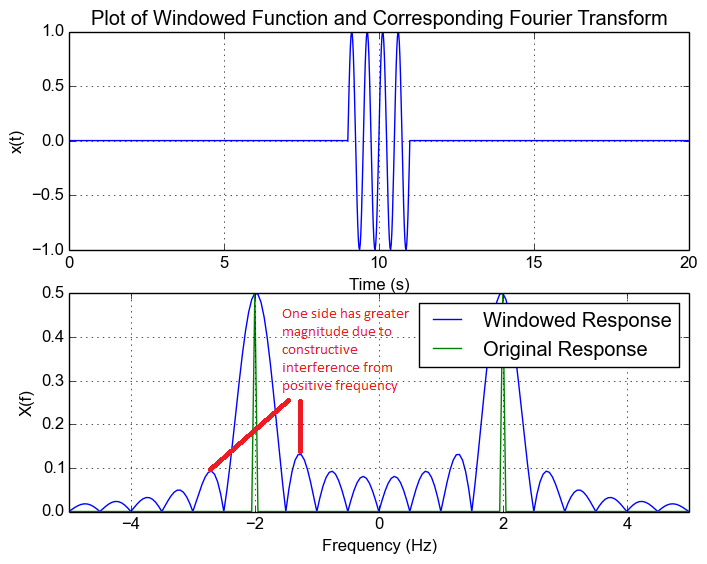When choosing a window function, window duration, and/or transmission frequency (assuming sampling rate satisfies Nyquist), one may want to understand what sort of spectral leakage would occur at a frequency of interest.
It is known that a finite-duration window corresponds to a non-finite bandwidth frequency response (e.g. rect <-> sinc), and it is also known that a multiplication in the time domain corresponds to a convolution in the frequency domain.
Consider the simple case of a non-windowed, constant-frequency sinusoid in the time domain, which corresponds to a frequency response of two delta spikes centered around 0 Hz.
Applying a window function would convolve the frequency response of the window function (e.g. a sinc function) over the delta spikes.
1. Does this convolution of the window function extend to the negative frequencies when calculating the spectral leakage in the positive frequency components (and vice versa)?
I would say yes based on the above (time domain multiplication <-> frequency domain convolution), and the following two images (source) which I annotated in red. But it leads me to question 2, which I find a bit concerning.
2. If spectral leakage does extend to opposite-sign frequencies, doesn't that imply window functions without a zero crossing at 2x of a frequency of interest would result in constructive and/or destructive interference ("spectral leakage") in the frequency response of the windowed duration at that frequency? I.e., frequencies wouldcould interfere with themselves?
Here is an image (source) showing that even for a given window duration, some common window functions could result in a nonthe occurrence of such "self-zero value at a frequency's negative counterpartinterference" would depend on the choice of window function:



